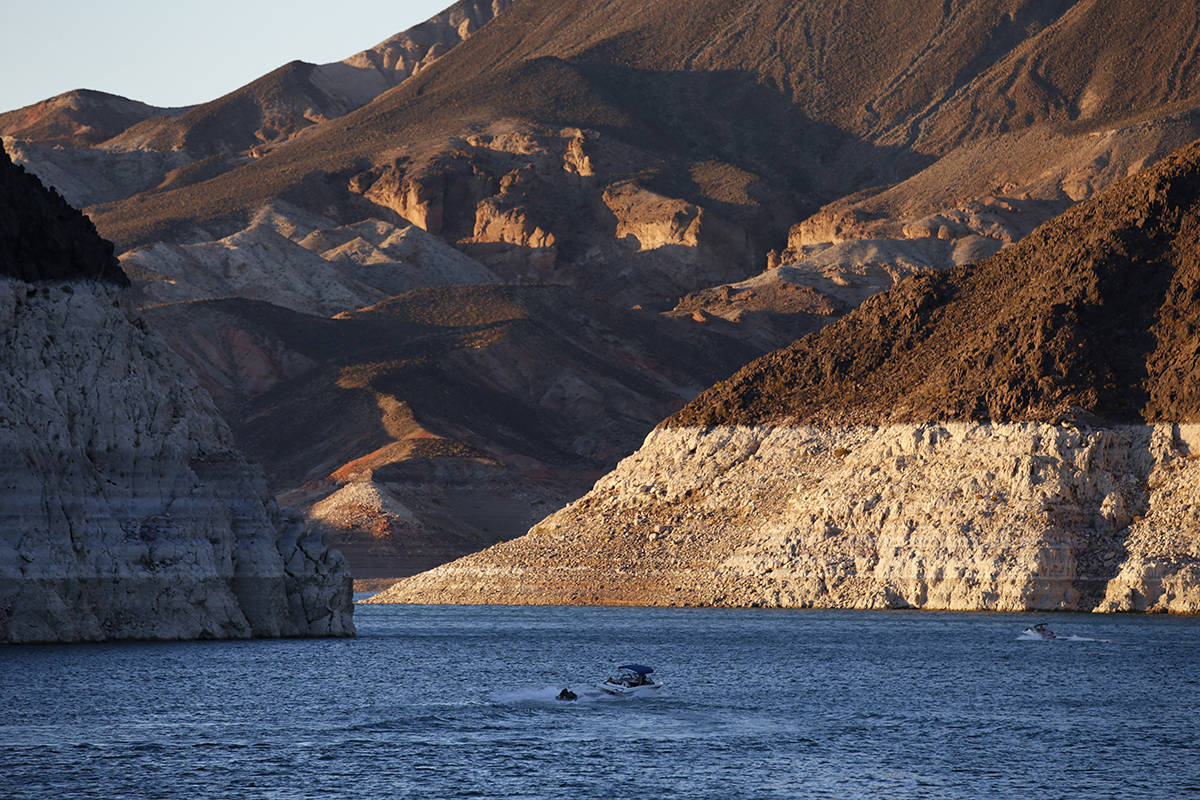Dry areas in the Southwest are getting drier, scientist says
BERNALILLO, N.M. — A sliver of water runs under the bridge here as sand bars and thickets of willow come closer to choking off the Rio Grande as it flows through New Mexico.
It’s another sign of dry times in the American Southwest, where New Mexico state climatologist Dave DuBois said the fingerprints of climate change have become more evident as drought intensifies and temperatures rise. He shared numerous maps and models during an online briefing that depicted how little rain has fallen in recent months and how dry the soil has become.
In Nevada, forecasters continue to track a record-setting dry streak for Las Vegas as their colleagues in Arizona hold out hope for relief from record heat.
DuBois explained that part of the blame rests on a semi-permanent high-pressure system over the West that has become stronger over time. The system has been keeping weather patterns from bringing more moisture into the Southwest.
“We’re actually seeing this pan out in our monsoons,” he said, noting it’s a pattern shift that has been developing for more than a decade.
“There are other things that go on with the Pacific Ocean, but in general it’s this longer-term, big-scale change that we’re seeing,” he said. “The dry areas get drier and it’s more erratic.”
From the Colorado River to the Rio Grande, water managers in the West are being forced to reconsider contingency plans as winter snowpack, spring runoff and summer monsoons become less consistent.
Federal officials and local governments have had to strike leasing agreements again this year to keep the Rio Grande flowing for an endangered minnow, and state officials reported this week that every reservoir in New Mexico is far below historical averages. The largest — Elephant Butte — is at 4% capacity, officials said.
No relief coming soon
Forecasters with National Weather Service offices in the Southwest and experts with national Climate Prediction Center say there’s little relief expected in the coming months as chances are better for below-average precipitation, continued drought and warmer temperatures.
New Mexico Rep. Melanie Stansbury, D-Albuquerque, has held listening sessions around the state over the last few years to talk water. After countless conversations, she said there’s a resounding sense that western water codes and management systems need to be modernized so they can adapt to changing hydrologic and social conditions.
“The challenge we’re facing right now is that New Mexico is trying to solve 21st-century problems using 20th-century solutions,” she told The Associated Press. “We have a governance infrastructure and physical infrastructure and practices that were developed and solidified during the late 19th and 20th centuries. … We really aren’t prepared for the change that’s happening.”
Aside from drought, Stansbury said another signature of climate change has been volatility. She pointed to a record dry year in 2018, high runoff levels in 2019 and the return to even more significant dwindling of the Rio Grande this year.
She said the problem is that current water management systems are based on outdated assumptions that rivers flow in a fairly consistent manner and that snowpack is continent.
She likened overhauling water policy and modernizing management to expansive efforts like reforming the criminal justice system or updating the electric grid to accommodate more renewable energy.
“These are big problems that will span the next century. We’re not going to solve it in the 2021 (legislative) session,” she said.

















